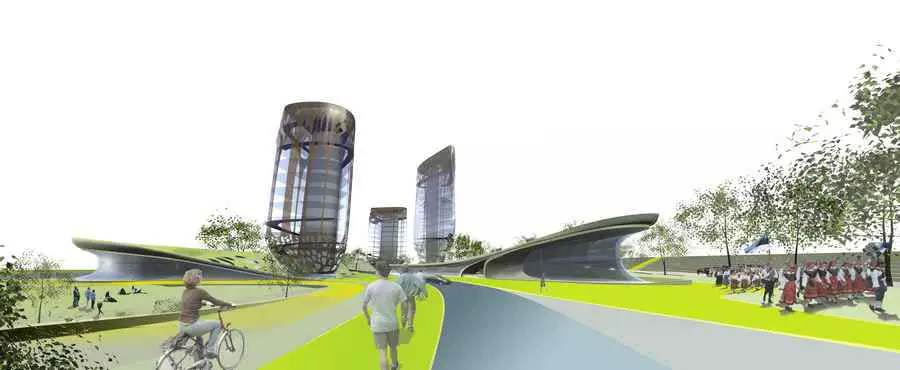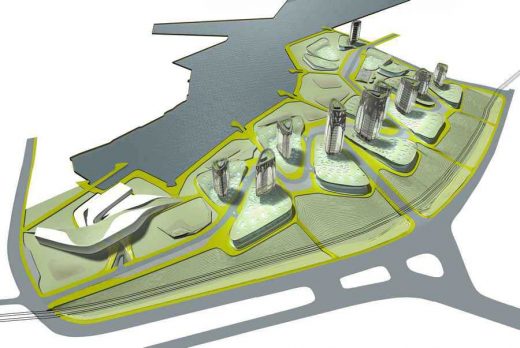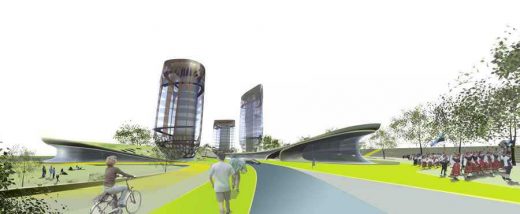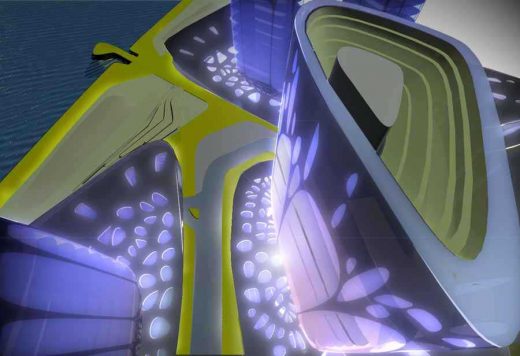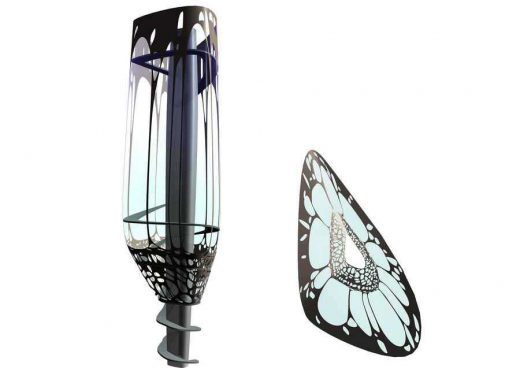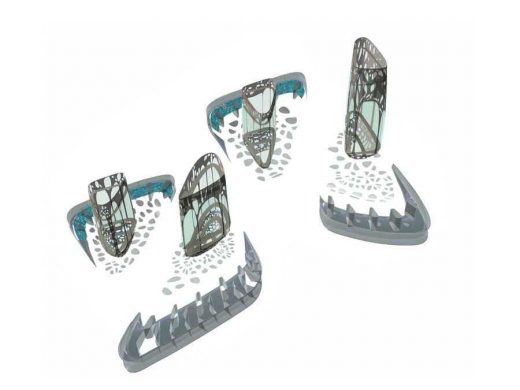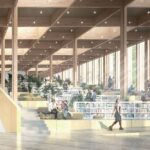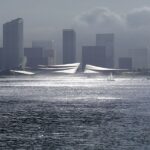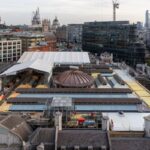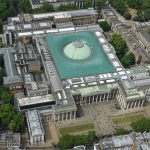Tallinn Development, Estonian Building Competition, Project, News, Design, Image
Tallinn Urban Development : Design Competition Estonia
Tallinn Project – design by e+i studio, Architects
23 Dec 2011
Tallinn Urban Development Competition
Location: Tallinn, Estonia
Date built: 2007
Design: e+i studio
European Competition, Finalist
A WOVEN ARCHITECTURE
Integrating Landscape, Infrastructure and Buildings
The proposal was born from identifying a continuous flow of undulating movement throughout the site. This movement, which ultimately defines the primary circulation artery, also create trapezoidal areas that are similar -yet different- to each other.
These are then developed into two opposite spiraling movements: 1. downwards-the podium element and the ramping underground parking; 2. upwards- defining the tower element of the final living landscape.
The site proposal establishes a series of circulation paths that rather than segregating modes of transportation, allow each to co-exist within a shared -yet defined- public space. The circuit of pedestrian paths and bike trails borders and weaves together all the site elements and flanks the vehicular roads at all times. Outdoor parking areas are provided for short-term parking, while there is long-term parking in the basement levels of each high-rise complex or major programme podium.
This woven circulation scheme allows movement between built elements in a natural fluid way; connecting landscape infrastructure to the distinctive water edge. Waterfront promenade, piers jutting into the water, small boat launching & water taxi stop all contribute to opening Tallinn to the waterfront and converting it into a new vibrant public space.
A Landscape Rather Than a Singularity
The project proposes the repetition and variation of 9 mixed use high-rise structures and one hotel structure, that rotate, shrink or grow to capture views and sun exposure. The intension was to move away from creating a single, overpowering vertical structure; which is felt to be un appropriate for the complexities and nuances of the industrial -yet richly panoramic-site of Tallinn Bay. Thus, together these structures create a landscape of similar yet different elements, within a richly patterned environment.
Project Team
Design: Eva Perez de Vega
SUSTAINABLE ECOLOGY
The site proposal substitutes industrial hardscape with gardened, softscapes. The built elements of the proposal are conceived of in a physical and visual continuum with the landscape and infrastructure elements. Elevated garden roof tops afford spectacular panoramic views of the Bay and the City of Tallinn. The waterfront promenade in turn leads and connects the recreational programs including gardens, a circuit of paths through the landscape, water taxi stop, piers, and a swimming pool.
Sustainable Water Management and Energy Consumption
All rain water is channeled and collected by the main vertical/ structural cores of each complex. It gets stored in basement tanks to be reused for public functions, such as street washing, watering of plants in public park, etc.
Sustainable Development of Public Spaces
The image of trainyard is deceptive; this site can become a spectacular urban space while maintaining the operation of the railroad or even increasing its capacity. The urban design proposal is characterised by its distinctive water edge landscape but also by its history as an industrial cargo bay. Industrial development inertia has kept the train yard space as obsolete and residual, but in fact, it is more like an urban piazza/urban garden. Currently, the existing cargo train lines are acting as a barrier between undefined spaces, which as a consequence are underused and under kept- often causing real urban problems. Given the fact that there are only two trains a day passing through it, there is an incredible opportunity to transform the space into a resource for tourists, residents, and travellers.
The proposal inverts this inception by re-surfacing the area with a grass/concrete system (Grasscrete) of planting and masonry blocks modulated to create varying densities of green and paving surface. The existing rail tracks will be depressed into the Grasscrete system, allowing for ease of pedestrian movement across the track areas without disturbing the operation of trains.
Bleachers line the edge of the plaza along the natural slope of the topography, creating a major gathering space for performances and special events. Pedestrian and vehicular pathways tie the area with the waterfront to create both enclosure and gateway. The train line which has been regarded as a barrier is now an open space for celebration and connection.
MIXED USE COMPLEX: RE-THINKING THE SEGREGATED MODEL
Learning From the Old Town Of Tallinn
Old town Social Interaction through Programmatic Overlap
In order to maintain the level of social interaction that exists on the streets of the old town, we propose a more integrated, ‘woven’ model for tower-base, where public functions are not solely part of the base, but rather offering a continuum through upward spiralling movements- towards the breath-taking views of Tallin bay and city. Therefore a ‘vertical street’ is established connecting the lower level to the high-rise element by means of a shallow ramp that spirals in and around the structural core and the tower skin, according to the different interior programmes.
While providing visual juxtaposition to the base element, the tower and base work together through fluid circulation offering a range of scales to the project; housing spaces with more intimate scale are included in the base, and retail area is included in the tower. The pattern of openings is customised based on the programme at the specific location within the vertical structure. Smaller scale openings create a denser pattern (gradient) in the public areas (shops, offices and recreation) which are concentrated on the bottom and the top portions of the tower, where more structural support is needed.
Within the urban planning of these mixed-use complexes are other non-residential programmes which help to increase the mixity and functional variety necessary to activate a new neighbourhood:
-Hotel: North-east side of the site
– Sporting and recreational facilities, which include outdoor areas, and a self-sufficient complex with underground parking
-Nursery and playground
Tallinn Urban Development Contest images / information from e+i studio
Location: Tallinn, Estonia
Estonia Architecture
Contemporary Estonian Architectural Projects, chronological:
Tallinn City Hall
2009-
BIG
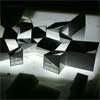
picture from architect
Tallinn City Hall
Vabaduse Square + St Paul’s Church Reconstruction, Rakvere
2009
Vabaduse Square : Estonian Architecture Competition
Building Developments in countries nearby
Comments / photos for the Tallinn Urban Development – Estonian Architecture Competition page welcome

